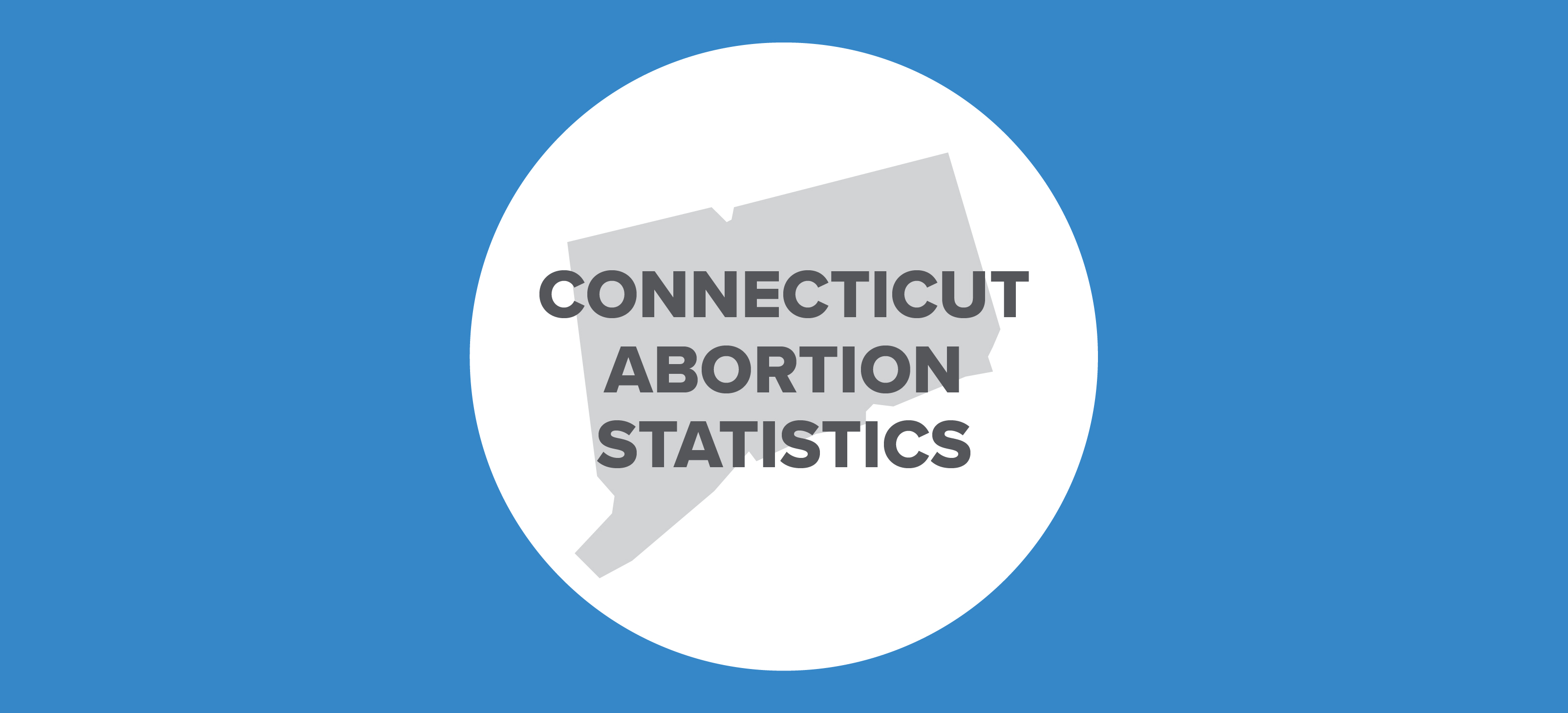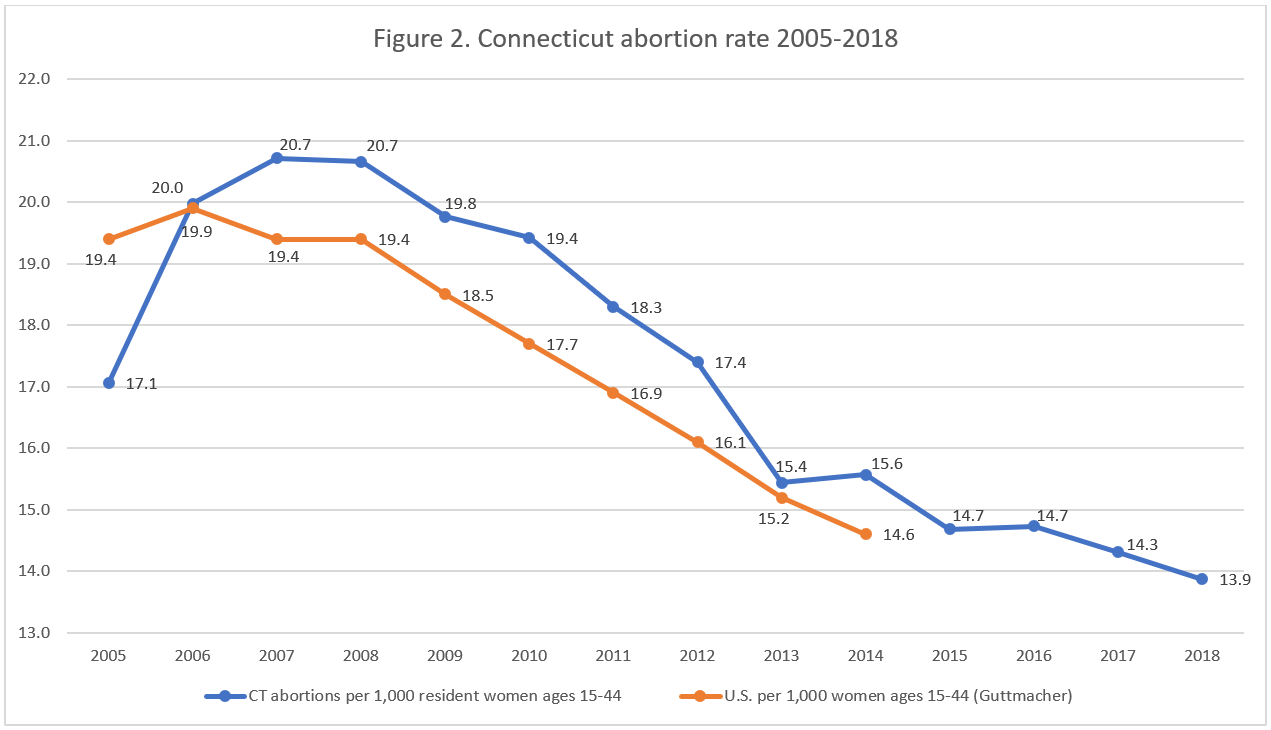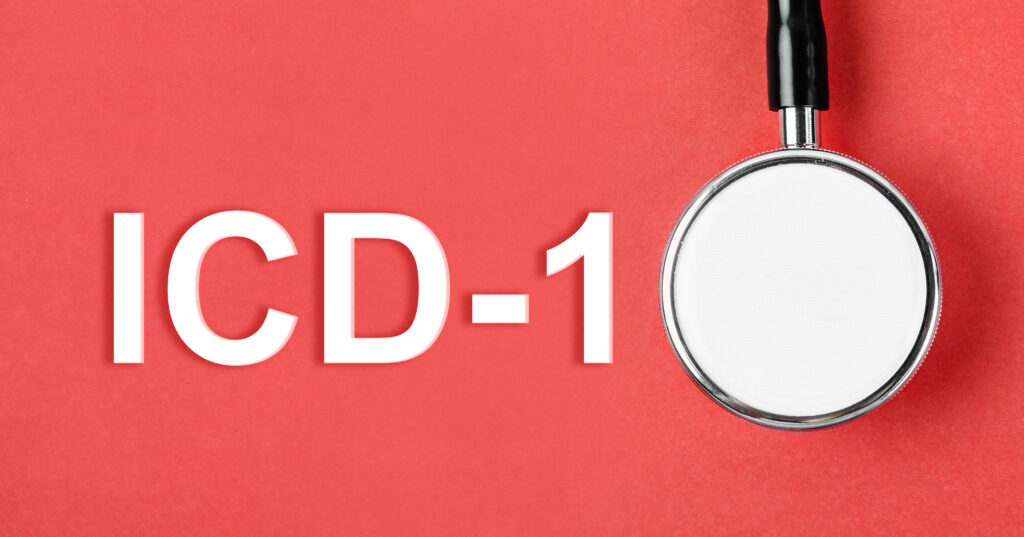Abortion Reporting: Connecticut (2018)

Connecticut’s annual abortion report for 2018 shows that abortions in the state declined from the previous year. Because the abortion report is not published online, the Connecticut Department of Public Health provided it to the Charlotte Lozier Institute (CLI) upon request.
Changes in Connecticut Abortions, 2017-2018

*Information on Planned Parenthood’s Connecticut market share is not publicly available.
Abortion Totals and Trends
Abortions in Connecticut fell by three percent from 9,584 in 2017 to 9,294 in 2018 (Fig. 1). Since 2001, the earliest year of data provided to CLI by the Connecticut Department of Public Health, abortions in the state have dropped by 30 percent. Chemical abortions have increased over the same period of time: since 2002, the first year chemical abortion procedures were reported as a separate category, chemical abortions have risen by 763 percent. However, chemical abortions declined by four percent between 2017 and 2018, dropping from 4,198 abortions in 2017 to 4,015 in 2018. CLI estimates that Connecticut’s abortion rate fell from 14.3 abortions per 1,000 women ages 15-44 in 2017 to 13.9 in 2018 (Fig. 2).
State Report Summary
Ninety-five percent of the abortions reported in Connecticut in 2018 were performed on state residents. An additional five percent were performed on women who traveled to Connecticut from other states. Of these, 187 were from Rhode Island (two percent), 107 from Massachusetts (one percent), 84 from New York (just under one percent), and 45 from other states (half of one percent).
As the Connecticut Catholic Conference has noted previously, a large proportion of the women who travel to Connecticut for abortions are under the age of 18. Almost nine percent of the out-of-state women who visited Connecticut for abortions in 2018 were younger than 18, compared to just three percent of the Connecticut residents who got abortions. Many of these minors traveled from states that require parental consent before a minor can obtain an abortion (Massachusetts and Rhode Island). Connecticut does not require parental consent or notification before an abortion can be performed on a minor girl.
Nine percent of the abortions that occurred in Connecticut, including abortions performed on both residents and nonresidents, were performed on women who were under the age of 20. Fifty-six percent were on women in their twenties, and 29 percent were on women in their thirties. Just three percent of the women who underwent abortions in Connecticut were age 40 or older, although age was not reported for two percent of the women who got abortions.
Connecticut reports abortions by gestational age in very broad ranges. All abortions that were performed in the first trimester (12 weeks of gestation or earlier) are grouped together, accounting for 89 percent of Connecticut abortions. Abortions performed in the first weeks of the second trimester between 13 and 15 weeks of gestation together made up not quite five percent of Connecticut abortions, and abortions performed between 16 and 20 weeks composed three percent of the total. Almost one percent of the state total (89 abortions) were performed at some point at or after 21 weeks of gestation, when unborn babies can feel pain, but the report does not specify the precise points in pregnancy at which these late-term abortions occurred. Gestational age was not reported for almost three percent of the abortions performed in Connecticut.
In 2018, 45 percent of Connecticut abortions were performed using suction curettage. Forty-three percent were chemical abortions. Eight percent were dilation and evacuation procedures, and three percent were performed using sharp curettage.
Planned Parenthood in Connecticut
In 2018, almost 94 percent of the abortions reported in Connecticut were performed at free-standing clinics. Another five percent were hospital outpatient procedures, and one percent were performed in a physician’s office or other place. Half a percent were performed as hospital inpatient procedures. Connecticut’s report does not identify the individual facilities where abortions take place, but it is likely that a large percentage of the abortions reported in Connecticut are performed by Planned Parenthood. Planned Parenthood of Southern New England (PPSNE) operates 16 of Connecticut’s 17 stand-alone abortion centers. PPSNE also operates an abortion center in Rhode Island. According to PPSNE’s annual report for the 2017-2018 fiscal year, PPSNE performed 11,030 abortions in Connecticut and Rhode Island. In comparison, there were an average of 8,860 clinic abortions reported in Connecticut in 2017 and 2018, suggesting that it is probable that a large portion of Connecticut abortions are performed by Planned Parenthood.
State Ranking
In 2016, CLI ranked Connecticut’s annual abortion reporting at 41st best out of the 50 states, Washington D.C., and New York City. Connecticut does not publish its abortion report online, though it makes it available upon request. Also, the state collects, but does not include in its report, data on the race and ethnicity, marital status, education, and pregnancy history of women who obtain abortions. The state also collects but does not report the number of abortions performed at each individual week of gestation and whether abortions result in any complications. Connecticut could improve its abortion reporting by incorporating this data into its annual reports. Additionally, Connecticut could collect information on women’s reasons for seeking abortion, as well as whether any aborted babies were viable and whether any survived attempted abortions – information that is particularly pertinent since 89 babies were aborted after 20 weeks of gestation in 2018. The Constitution State could also make its abortion reports more accessible to the public by publishing them on the Department of Public Health website as many other states do.
- Starting with the 2018 abortion reports, abortion rates are calculated by the Charlotte Lozier Institute to allow for easier state-to-state and year-to-year comparisons. Rates were calculated by CLI using population estimates from the United States Census Bureau. The rates were calculated using the following formula: (total number of abortions performed in Connecticut ÷ number of resident women ages 15-44) x 1,000. Rates may differ slightly from previous CLI articles due to revised population estimates.






























